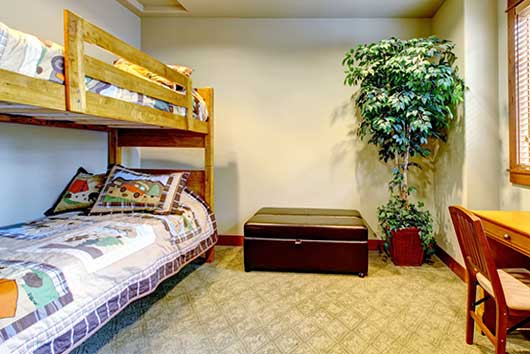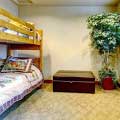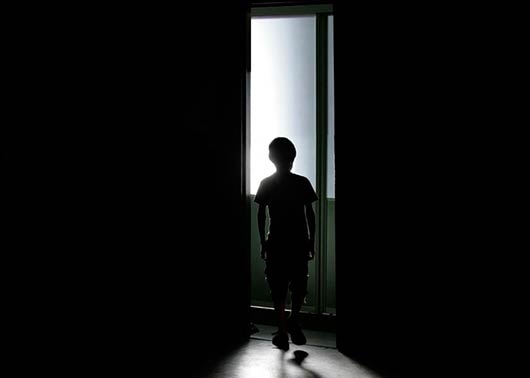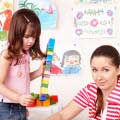
With children home from school during winter break and snow days, parents can often be at their wit’s end with how to keep these active kids occupied, especially when weather may force a great deal of indoor time. One solution to balancing children’s active and quiet time–and something most parents probably haven’t considered–is Feng Shui!
Feng Shui is a collection of ancient design principles aimed at helping people live more harmonious, healthy, successful lives. And these principles have been applied for thousands of years to help children succeed a their studies, stay healthy and grow as human beings toward their full potential. Mamiverse spoke with Latina Feng Shui expert Julie Anna Alvarez of Happy Chi Solutions Feng Shui Consulting & Seminars to find out what tips she could offer our readers.
Read Related: Make Lifestyle Changes Without Punishing Yourself
Alvarez explains that a child’s bedroom is the individual room that will have the most influence on the child, so assessing this space is paramount. Is the bed placed where the child can see the door to the room from their bed, but not in direct line with the door? Does the bed have a sturdy headboard and have a solid wall behind it? A bed placement that answers “yes” to both these questions will help your child experience less anxiety and feel more secure. If at all possible, avoid bunk beds. The energy of each child feels squished overnight from either being too close to the ceiling or having the other bunk directly above. Similarly, keep bookshelves or anything that would press down the energy overhead away from the bed.
What visuals does your child see around him in his room? The first thing he sees upon waking should be something inspiring–not a pile of cluttered toys, nor a blank wall. Get down to his level and see what he sees. Alvarez suggests that art work and furniture be arranged at a height that doesn’t seem to tower over kids. Artwork that strikes a balance between soothing and sparking creativity will suit your child’s bedroom. Photos of him enjoying good times with family are a great addition. Also display any awards or recognitions your child has received, in order to stimulate his self-esteem and energy for continued achievement. Any mirrors should be hung so the child can see his full head with an extra six inches above his head, as this symbolizes room for potential. Even if your children likes pop culture posters, avoid any that depict violent or disturbing scenes. Clutter, by the way, isn’t good anywhere in the house as it stagnates and blocks the energy flow. Where children are concerned, clutter can cause a lack of focus because there is an over-stimulus of things surrounding them.
The bedroom should be primarily a place of rest, so try to provide storage for toys if there is no room in the home for a separate play area. Electronic clutter is also disruptive to children’s health and sleep–so remove televisions and computers to another area of the home (and keep these items out of your own bedroom too, for your own good). Any digital alarm clocks are best kept away from your child’s bed–across the room is ideal to prevent the electromagnetic frequency (EMF) waves from having an impact on your child’s rest and immune system.
Alvarez recommends pale yet vibrant green to stimulate family energy and the growth of the child. However, pale yellow, pink or blue can also work well. Dramatic, bold colors are way too energetic for a child’s bedroom and may cause difficulty with sleeping. Bolder tones are better for a separate play area. Natural light and full-spectrum light bulbs are the best lighting options. A very soft nightlight can be helpful, but should be kept away from the bed and not shine into your child’s face when he sleeps.
To help support your child’s success in studies, have books be accessible to his reach. If there is room for a desk in his bedroom, try to position it so the child will have more of an open space in front of his view (this promotes their having a broader outlook and fortunate opportunities in their future). If the desk must face a wall, have a landscape scene with open vistas (not mountains or anything that depicts obstacles) at his eye level. Also, if he cannot see the door while seated at the desk you might want to place a mirror at eye level so he can see who enters the room behind him. This will reduce anxiety in your child so he can perform better while doing his homework.
Finally, Alvarez recommends adding living plants, especially those with rounded or heart-shaped leaves as a decorative touch that adds uplifting energy to a child’s room and will support the energy for growth. Some of these plants can even act as air filters–peace lily or ivy are an easy to care for choice.
Many clients for whom Alvarez has provided consultations in their homes (from tiny apartments to multi-level houses) have found these suggestions transformative to their family life. One memorable example was a client whose daughter refused to sleep in her own bedroom and insisted on sleeping in Mom and Dad’s bedroom every night. Sure enough, once Alvarez sorted out the Feng Shui layout of the little girl’s bedroom and the changes were implemented, the little girl loved her room and started sleeping in it! On another consult, after Alvarez had helped a divorced mom Feng Shui her house, the woman’s little boy arrived home from a play date and noticed right away the change in the energy of the home. He proclaimed that the ficus tree in the living room had grown taller and that the colors in his room were brighter! He could feel the change in his environment (even though he had no idea that a consultation had taken place) and was so much happier in the now more harmonious home.
Implement some or all of the tips Alvarez has provided above and you and your young one(s) will likely notice a positive change in your living space as well.
For more information on Feng Shui visit: www.HappyChiSolutions.com and to learn about upcoming workshops and events “like” the “Happy Chi Solutions – Feng Shui & More” Facebook page or follow @HappyChiTweets on Twitter.












